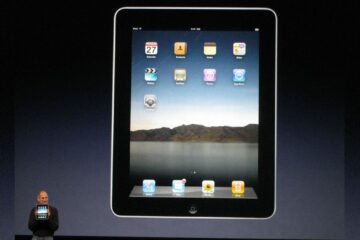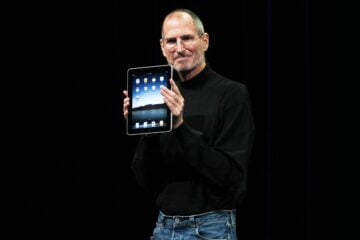How can Apple make the iPhone transparent? As Tim Cook continues to promote the idea of mixed reality devices as the future, the futuristic idea of a transparent iPhone makes more sense from a UI perspective.
Let’s assume that there is truth in the rumors, that there are signals from Cupertino as to the future thinking. How could this happen in reality in 2017?

Apple CEO Tim Cook smiles during a product launch event on October 27, 2016 in Cupertino(Photo by Stephen Lam/Getty Images)
Making the screen transparent is not the biggest issue – there have been various technology demonstrations of clear screens that can switch on to display an image. Although these screens are measured in much larger dimensions and are suitable for home TV screens, the principles remain the same and the march of miniaturization means reducing this to a screen just over five inches on the diagonal is not an insurmountable problem over the near term.
What is a bigger problem is everything else needed to make any iPhone work as expected. Take power. The iPhone family already use some of the smallest batteries in the flagship class devices – the efficiency of iOS helps the iPhone reach the same ‘work for a day’ endurance, but the battery remains a significant occupier of physical space inside the chassis. It should also be obvious that batteries are not transparent.
Current battery technology coupled with user expectations means that putting the batteries behind any bezels around the screen (especially at the base of the device) will not hold enough charge. The same arguments can be made for the circuit boards. You are not going to get all of the circuitry, batteries, and connectors into the small space below the screen and behind the bottom bezel.
In 2017 there is a physical limit as to how small all of these components can be made. Trust me, if Apple (or any other manufacturer) could make them smaller, they would.

There’s probably a witty “Google Glass plus Tim Cook” caption for this picture, but I can’t think of it right now (Photo: Bern Thissen/AFP/Getty Images).
Then there’s the risk that Apple would be taking with the design. Apple’s releases are nothing but predictable and reliable. It is rare for any major design changes to happen within its product lines. The iPhone of today can be seen in the first device announced in 2017. The iterative updates keep sales coming in but rarely threaten the user. An iPhone is an iPhone is an iPhone, in use, in operation, and appearance. Users know what to expect.
While the unusual look of a transparent iPhone 8 might explain the backup pal of the iPhone 7S and iPhone 7S Plus, it would be a huge departure for Apple to gamble the status of the iPhone and the air of dependable devices that is covered by the classic “It Just Works” campaign phrase.
If the hardware is not ready, if the market is not ready, what are we left with?

A man plays at the Pokemon GO augmented reality game in central Moscow (Photo: Vasily Maximov/AFP/Getty Images).
If you can’t make the hardware transparent, do what ever coder in the past has done. Make it transparent through software.
The iPhone already has a number of elements that are required for mixed reality. It has positioning and spatial awareness. The forward facing camera could be used to gather information about the user’s relative position and glance. The rear camera can look out into the world (and with a dual-lens system a stereoscopic view could extrapolate depth and distance information). Bring in the image from the rear, do some transformative maths to create the best fit of the image so it matches the perspective of the environment as much as possible, and start overlaying the mixed reality data.
This would be far less threatening for end users. The mixed reality enabled iPhone would look and feel like an iPhone, it would be comfortable, but it would also be able to switch into mixed reality mode and Apple’s software could start delivering the benefits of mixed reality through an app.
In fact we’ve already seen this approach in a number of applications and games in the last few years – most notably in Pokemon Go that allowed you to look out into the real world through the smartphone’s screen relaying the image from the camera lens… with the addition of the occasional Pokémon to capture.
This approach allows Apple to bring mixed reality to the iOS user base. It could be limited to the presumptively named iPhone 8 because of potential additions to the camera hardware, or it could be available across some or all of the rest of the portfolio. By brining in mixed reality this way, the concept can be built up time without threatening the sales or invulnerability of the iPhone family.
When battery technology, circuit boards, and every other bit of hardware are shrunk once more, when users accept the mixed reality app as useful, when developers have been locked into a mixed reality API in iOS, then Apple can go for a genuinely transparent iPhone. Until physics and the market are ready to make it, Apples best plan is to fake it.
[Source:-Forbes]



